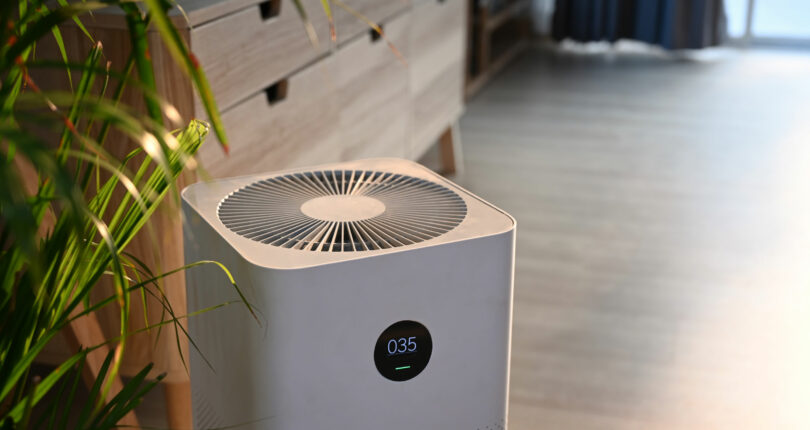Room air cleaners are effective along with a central unit
Dear Jim: For my son’s allergies, I should also use a room air purifier even though we already have a heat pump filter. What are the features and ratings to compare when selecting one? — Sandy R.
Dear Sandy: Selecting a room air purifier can be confusing with all the types, sizes, and costs. There are also various effectiveness and electricity usage differences among the units. The proper filtration type, depending upon your son’s allergies, is more important than the size or price.
Using room air purifiers does not eliminate the need for the main furnace filter, which removes particles that stay suspended in the air through the ductwork. This not only helps indoor air quality, but it keeps the heat exchanger clean for better furnace efficiency.
The Association of Home Appliance Manufacturers has testing standards to rate the effectiveness of different types of room air purifiers — it’s called the CADR rating, which stands for clean air delivery rate. Seeing these ratings on the various models allows you to compare the effectiveness without having to consider the design, appearance, or the type of filter material.
First, check with your allergist to determine which allergens are causing the most problems for your son. The particle size varies significantly for various allergens, so it is important to know which ones need to be removed from the room air. Many of the particles and allergens in room air are relatively large (mold, pollen), so they do not stay suspended long enough to make it all the way to the furnace filter. They puff up each time someone sits on a sofa or bed, so room air purifiers are more effective for removing these.
The CADR rating tests are done for the three most common particles in the air: household dust, tobacco smoke, and pollen. Most allergens are in this range of particle sizes. Each air purifier will have three individual rating numbers, one for each particle size of the above allergens. A filter that is good for pollen may not be very effective for smoke.
To use the CADR rating when selecting a model, calculate the square footage of the room and multiply it by 0.67. For example, if you need to remove pollen from a 10-by-12- foot bedroom, the air purifier should have CADR pollen rating of 80 or higher.
If you are not sure which particles you want to remove and just want generally cleaner room air, a model with a HEPA filter and a carbon element (which also removes odors) is a good overall choice. A multiple-speed model for rapid filtering or for slow, quiet operation at night is a plus.
According to the Environmental Protection Agency, air cleaners are just one of three basic strategies to improve indoor air quality.
Typically, the best way to improve indoor air quality is to eliminate individual sources of home pollution or reduce their emissions. Many times, source control is the more cost-efficient approach to protecting or improving indoor air quality.
Another way to improve your home’s air quality is to increase ventilation. Open a window or a door and run your attic fan on a nice day. Single-room fans, such as bathroom fans and kitchen fans, that exhaust outdoors are also helpful. Be aware that ventilation may not be the most efficient way to control air quality because it can make your HVAC system work harder to heat or cool your home.
You may receive flyers in the mail with offers for air-duct cleaning and claims that having a company clean your duct work will improve the air quality and efficiency of your home. However, duct cleaning may not always be necessary for air quality, and there is no indication that just cleaning your air ducts will improve your system’s efficiency.
Duct cleaning may be necessary if:
- There is visible mold in your duct system or there was a recent flood that caused mold or mildew in your home.
- There is something in the ductwork impeding airflow, such as debris or an infestation. Major renovations or new construction can put construction debris into the duct system, so post-construction is an ideal time to consider duct cleaning.
- Your heating registers are releasing dust into the air.
- Home residents have allergies or asthma problems that have not been alleviated by other changes.
If you decide to have your air ducts cleaned, take time to learn as much as you can about air-duct cleaning, get estimates from at least three service providers, check references, and be wary of air- duct cleaning companies that make broad claims about the health benefits of their services.
Find out more about indoor air quality, air-duct cleaning, and air purifiers at www.epa.gov/indoor-air-quality-iaq or www.epa.gov/indoor-air-quality-iaq/air-cleaners-and-air-filters-home

